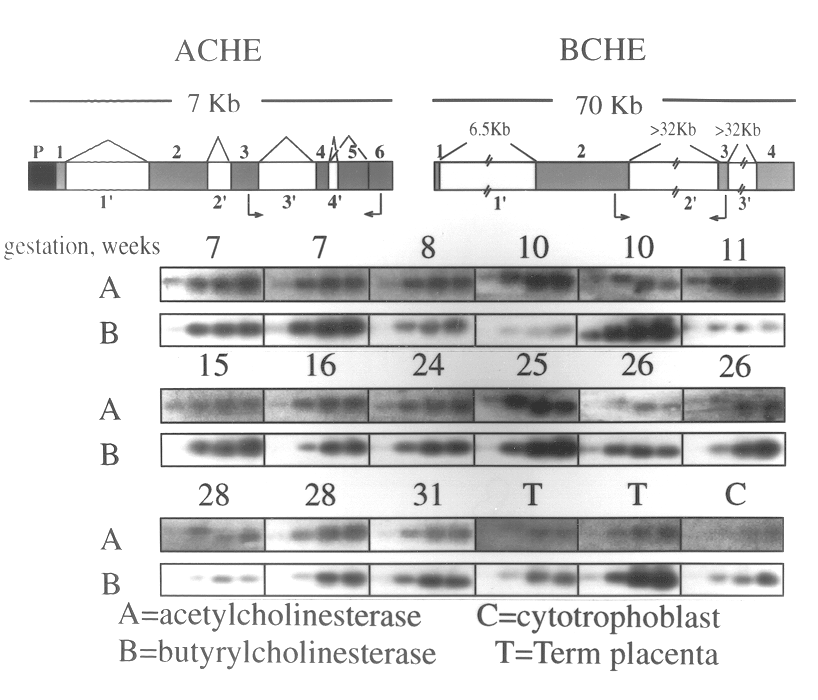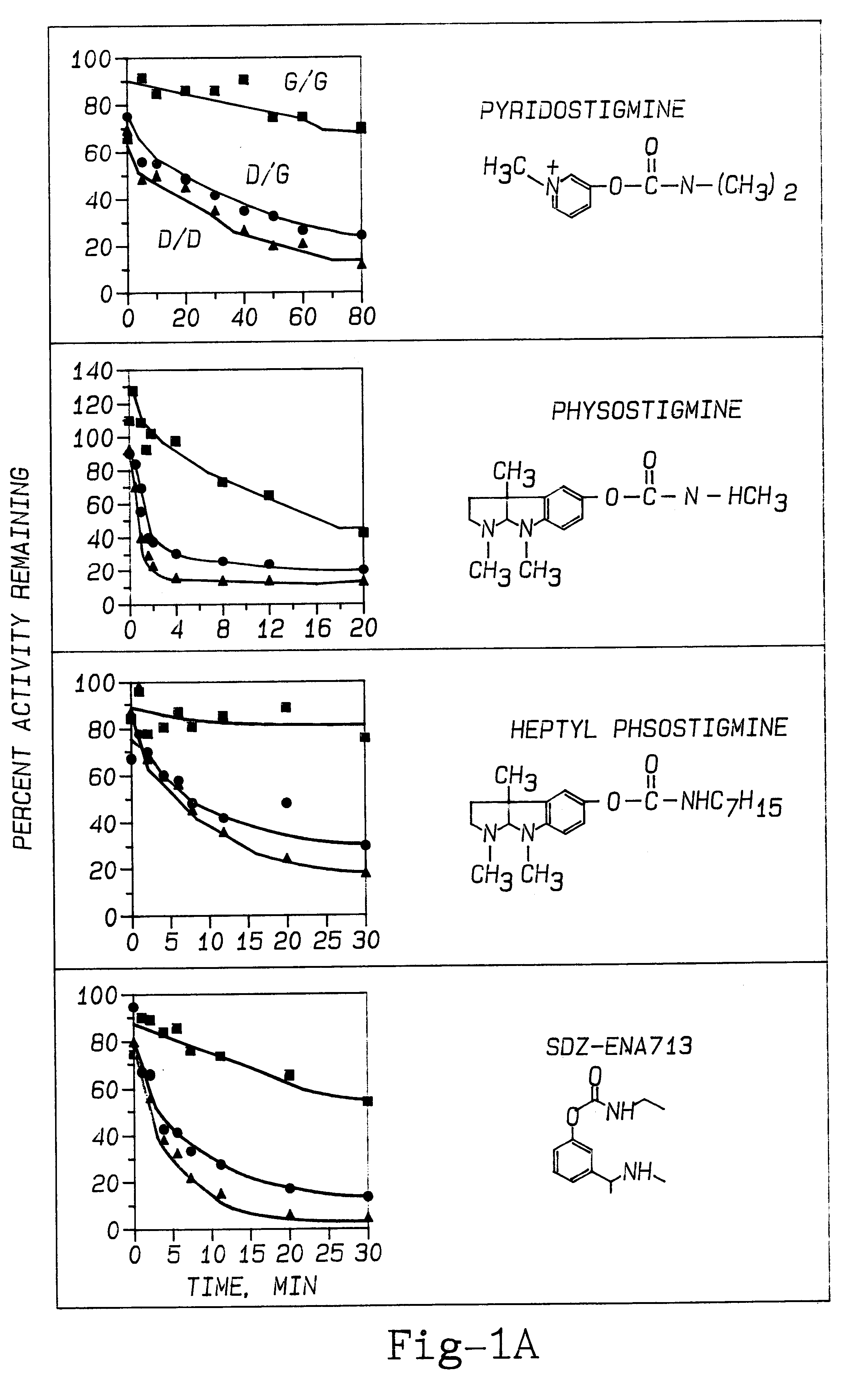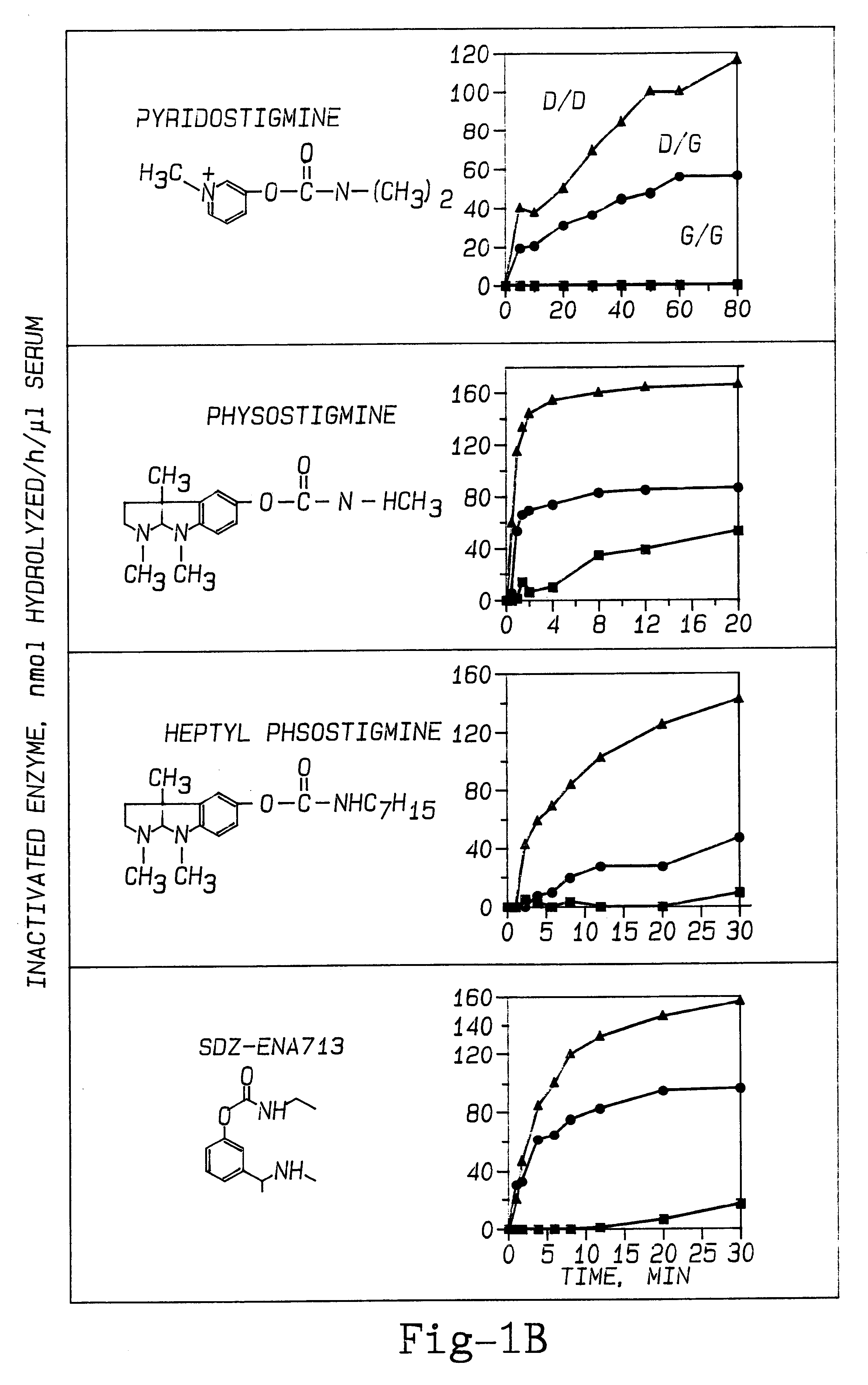Method of screening for genetic predisposition to anticholinesterase therapy
- Summary
- Abstract
- Description
- Claims
- Application Information
AI Technical Summary
Benefits of technology
Problems solved by technology
Method used
Image
Examples
example 1
Genetic and Serum Analysis
The most frequent phenotypically effective mutation of BuChE and, therefore, the most likely to be seen affecting inhibitor interactions is the substitution of aspartate at position 70 with glycine, known as the "atypical" BuChE variant (McGuire et al, 1989, Neville et al, 1990a,b, 1992). Homozygous carriers of this mutation average 1:2,500 among Caucasians (Ehrlich et al, 1994a), reaching an incidence of 1:1,000 in some sub-populations originating in the middle-East (Ehrlich et al, 1994a), which implies a frequency of approximately 3 to 7.5% heterozygotes. The frequency of this variant among Blacks is very much lower (Ehrlich et al, 1994a). The atypical variant, in contrast to the normal enzyme, was shown to be unable to hydrolyze succinylcholine, and to be much less sensitive to several inhibitors: physostigmine (Kalow & Davis) and several organophosphates, including diisopropylfluorophosphate (DFP), iso-OMPA and echothiophate (McGuire et al., 1989; Gnatt...
case study
H.K., born in 1970, was first referred to applicants in 1989 following an incident of two hour post-anesthesia apnea caused by succinylcholine administration in the course of knee surgery, which was treated by respiration. At the time, applicants assayed his serum BuChE against BTCh and found it to be approximately 30% of normal level and totally incapable of hydrolyzing succinylcholine, suggesting that it was the "atypical" enzyme (Neville et al., 1990a). Following both PCR amplification, informative SauIIIA restriction and direct sequencing of the corresponding region from the BCHE gene in his peripheral blood DNA by previously established techniques (Ehrlich et al., 1994a), H.K. was indeed diagnosed as being homozygous for the "atypical" allele, but not a carrier of other frequent point mutations of BuChE. The same methods revealed that both his parents and his sister are heterozygous carriers of the "atypical" BuChE allele. The patient was advised to avoid anti-ChE insecticides ...
example 2
Evaluation of Pam Therapy for OP Poisoning
The effect of PAM therapy on OP poisoning in BuChE variants was examined. An established therapy for OP poisoning is a combination of 2-PAM and atropine, combined with diazepam (to deal with the problem of seizures). To study the effects of variant BuChE requires an investigation of the dynamics of catalysis. This includes attraction of the ligand into the deep gorge, formation of an acyl-enzyme intermediate by displacement of the choline alkoxy group by the enzyme's active site serine hydroxyl oxygen, and hydrolysis of the acyl-enzyme (Taylor, 1990; FIG. 5). Detailed dissection of catalysis by any ChE variant would discriminate between effects on one or the other of these stages of catalysis.
The inactivation of ChEs by an organophosphate agent (OP) is analogous to the acylation step (Wilson, 1954; Taylor, 1990). Phosphorylation of the active site serine (Ordentlich et al., 1993b) is just as specific for S.sup.198 as is the acylation stage o...
PUM
| Property | Measurement | Unit |
|---|---|---|
| Temperature | aaaaa | aaaaa |
| Molar density | aaaaa | aaaaa |
| Molar density | aaaaa | aaaaa |
Abstract
Description
Claims
Application Information
 Login to View More
Login to View More - R&D
- Intellectual Property
- Life Sciences
- Materials
- Tech Scout
- Unparalleled Data Quality
- Higher Quality Content
- 60% Fewer Hallucinations
Browse by: Latest US Patents, China's latest patents, Technical Efficacy Thesaurus, Application Domain, Technology Topic, Popular Technical Reports.
© 2025 PatSnap. All rights reserved.Legal|Privacy policy|Modern Slavery Act Transparency Statement|Sitemap|About US| Contact US: help@patsnap.com



